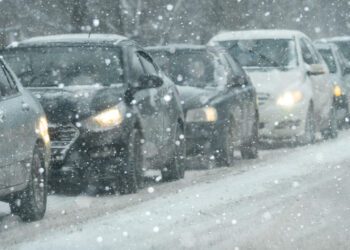By Jessianne Wright EBS Contributor
BOZEMAN – As autumn rain and snow put a majority of Montana’s wildfire flames to bed, in many cases, the seed for regeneration has already been planted. Often caused by lightning, wildfires play a natural role in the ecosystem of the West, where the commonly dry conditions influence fire activity year to year, and plant and animal species draw direct benefits from fire when it burns.


Conditions that make for a fire
This year has been one of the more active fire seasons state-wide in several years, with over 1.2 million acres burned throughout the state at EBS press time Sept. 27. However, while flames lit up Montana’s northwest, in particular, regions such as Yellowstone remained pretty tame.
“It’s been a very quiet year here in the park,” said Yellowstone National Park Fire Ecologist Becky Smith. As of EBS press time, there have been six human-caused fires and two caused by lightning this year, all eight of which burned less than one-tenth of an acre.
Even with the drier months of late summer, Smith said lightning didn’t strike in the park at times or locations that were dry enough to carry flame. That said, 2016 was a completely different story.
“It was the most active fire season after ’88 in the written history of the park,” Smith said about last year’s fires. Twenty-two wildfires burned about 63,000 acres, she said, and the largest of these fires, the Maple fire, burned over 45,000 acres.
“It will be very interesting to see what comes back in these areas,” Smith said, noting that much of the burned acreage is in areas where ’88 fires burned and were experiencing re-growth. Lodgepole pine, which makes up nearly 80 percent of the park’s forest, begins producing cones at about 20 to 25 years of age, so those burned last year should have released seeds during the fire, she added.
Philip Higuera, professor of fire ecology at the University of Montana, says the biggest factor impacting wildfire year-to-year is drought, which means it isn’t uncommon to see such variability in fire activity each year.
“Big picture, the reason that Montana has experienced such an extreme fire season this year is because of an extreme drought,” he said. Fuels dry out and precipitation doesn’t stifle the flames.
Last year, Higuera said, the Yellowstone area experienced drought conditions, while this year the region was much closer to average in terms of precipitation. In contrast, the northwest and eastern parts of the state experienced a “flash drought” wrought by exceptionally low precipitation this summer.
When the flames burn
Yellowstone National Park must balance the role fire has on the ecosystem with threats to developed areas when determining a reaction to a fire. Smith says they might manage different sides of a fire in different ways, perhaps suppressing one side in order to protect a structure, while letting another side burn “to restore fire to the ecosystem.”
During a fire, ecologists monitor what is going on with field tests, gathering live and dead fuel sources in order to measure moisture content and understand how the fire is burning. They might collect herbaceous plants and duff—the layer of decaying needles, leaves and other material on the forest floor.
Understanding what a fire is burning, as well as looking at the terrain, can help to predict how it will burn, where the fire will travel and its severity level, Smith said. These factors determine a fire crew’s response.
“We don’t really like to label fires as good or bad,” Smith said. “There are just different effects of fires.”
One effect of a wildfire on the environment is a transfer of carbon storage. An element that is known as the basic building block of life, carbon is utilized by plants in photosynthesis and is either stored within the plant or respired back into the atmosphere in what is called the forest carbon cycle.
During a wildfire, a portion of the forest’s carbon is released into the atmosphere through combustion, while some of it remains in the dead trees that are left and some is stored in the charcoal that is produced, says Andrew Larson, professor of forest ecology at the University of Montana.
Carbon stored in the dead trees and charcoal will be released through decomposition over time, slowly returning the element back into the atmosphere and soils. Debris left after a fire, such as charred wood and charcoal contributes to increased soil moisture retention and decreases the density of the soil, Larson added.

After the fire
According to Smith, our region has evolved around fire, meaning that the seemingly destructive flames of a wildfire are actually key factors in shaping the ecosystem. “Within Yellowstone and the Greater Yellowstone Area, it is well documented that fire has long been a part of the ecosystem and has shaped it,” she said.
Known as fire-dependent, the Northern Rockies subspecies of the lodgepole pine produces a serotinous cone that will not release seeds until its resin has melted at a high temperature, only reached during a fire. Burning at this temperature, a fire will create favorable, open, sunny areas for the new seedlings that are released, Smith said. “It’s evolved to reproduce that way.”
Early-fill plant species, such as fireweed and lupine, will come in after a fire pretty prolifically, she said.
“One of the important things to recognize is that most fires only consume about 20 to 30 percent of total forest,” Larson said. “There’s a lot of biomass left. … In many even very severe wildfires, the below-ground plant matter is still alive and will sprout.”
In the Northern Rockies, Larson added, shrubs and aspen trees will regenerate from their root systems after the flames stop burning. Depending upon how much of the growing season is left, Larson said, that usually begins the next spring. “There are legacy materials that persist through the fire event. They’re ready to go back to work when the snows melt the next spring.”











